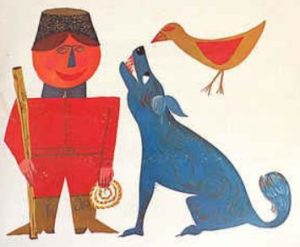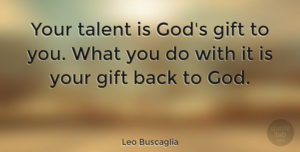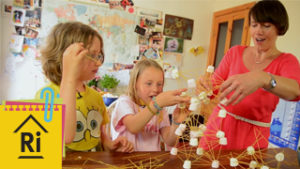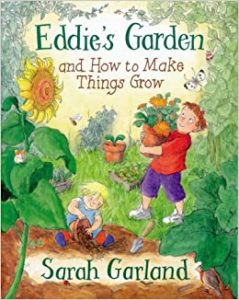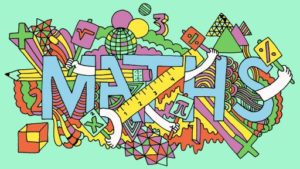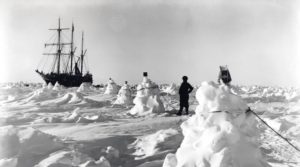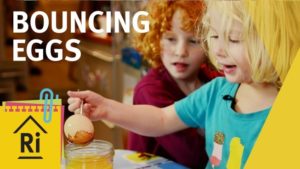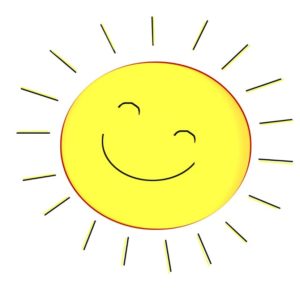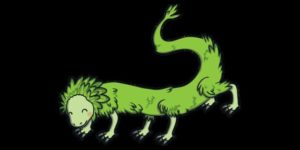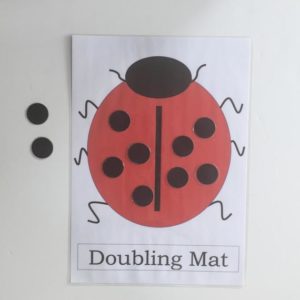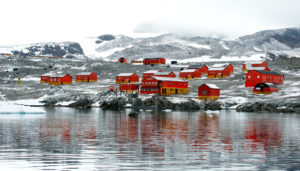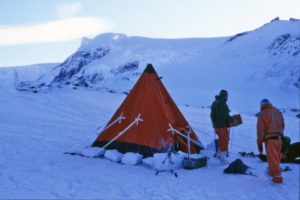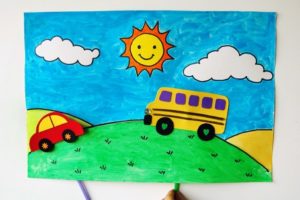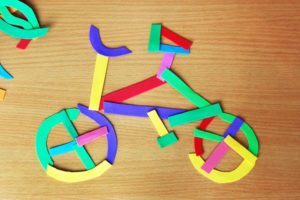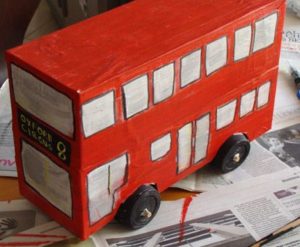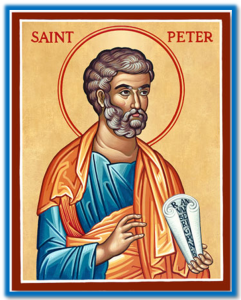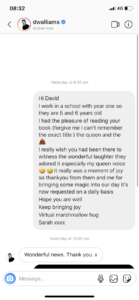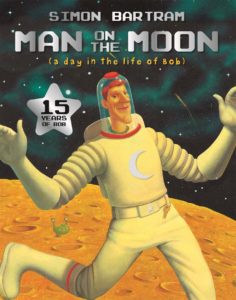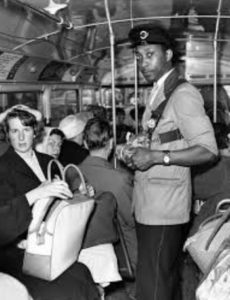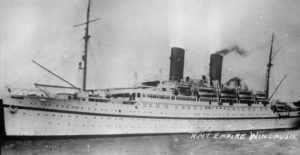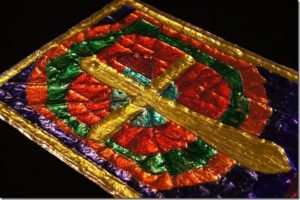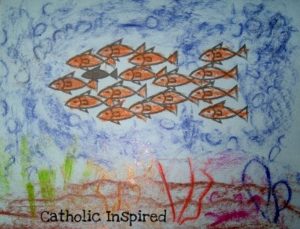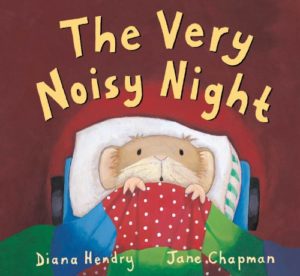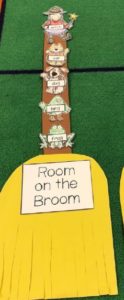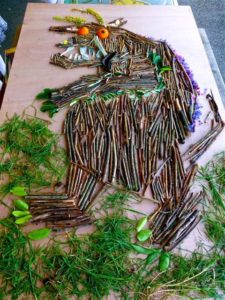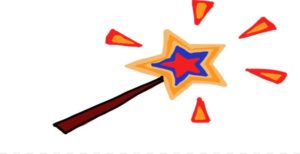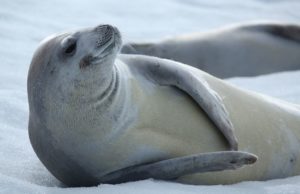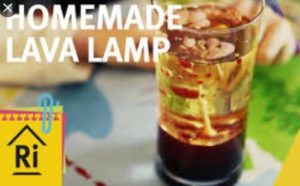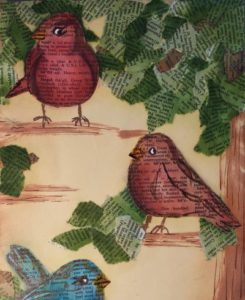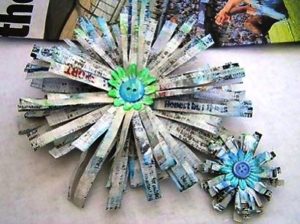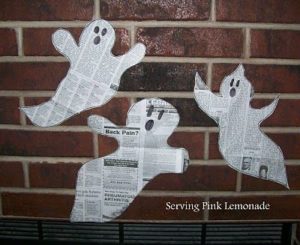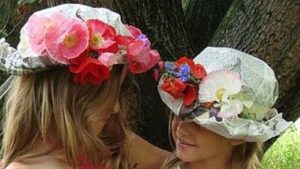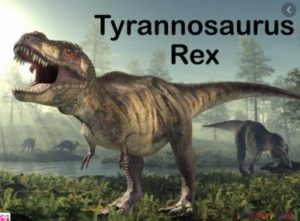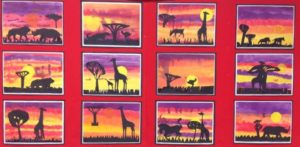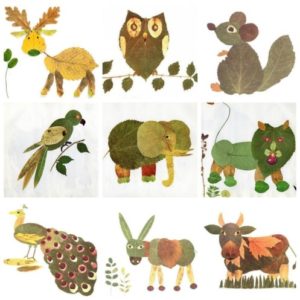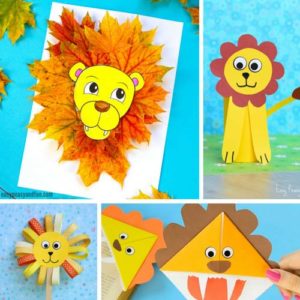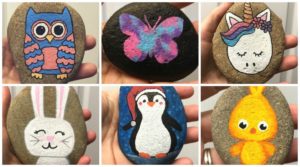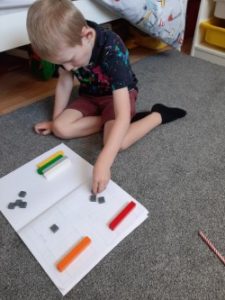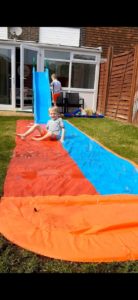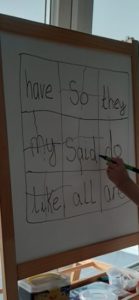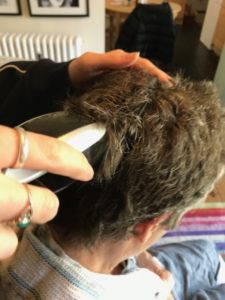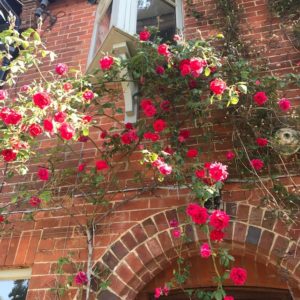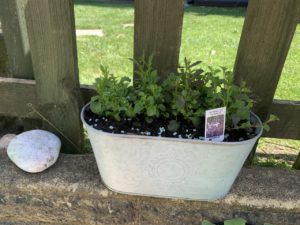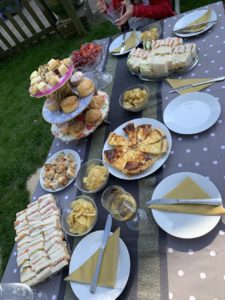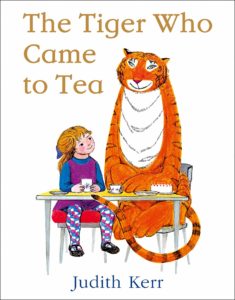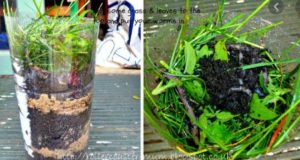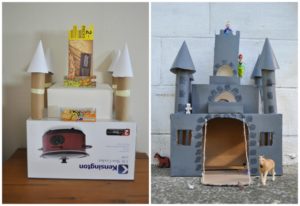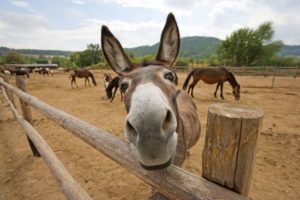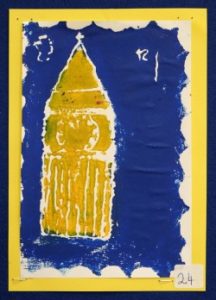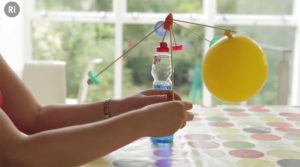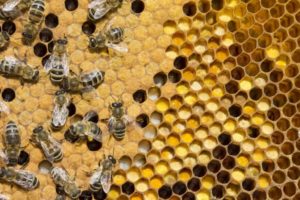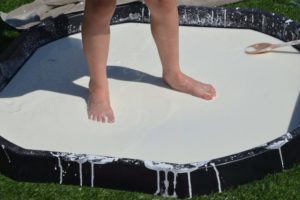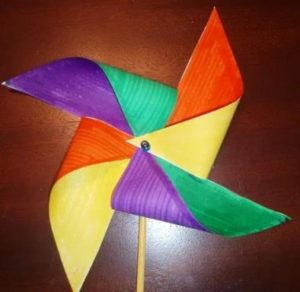Home learning for the last week!
It is the last week before the summer holidays and our last home learning online before the planned return to school in September! Where did the time go and how did we get here!? We at school are so proud of all our children and their families who have risen to the challenge through this difficult time. We have been so impressed by the resilience shown by the children in school, their love of being back with friends and learning together as well as the support of families at home, schooling their children through this strange time . We hope that you all manage to have a restful holiday and that you are all looking forward to joining your new teachers in September. We look forward to seeing you all again then too!
Over the holidays it would be great if you could keep up with some reading. Maybe the children could keep a diary of their holidays or write postcards to friends as well as keep up with some maths in their day to day lives. All of the blogs from the last few months will remain on the school website so that if you want to do that exciting science experiment that you never had the chance to complete or go back over that maths that was a bit tricky it is all there for you to revisit.
Have a lovely holiday from all in year 1!
English reading and writing
You will be doing some phonics focusing on the sound ow (blow), oa (goat) and o-e (rose) and as well as some spellings linked to the poem this week. (see below).
If it is a bit tricky or moves too fast for your child just focus on the key phonics being taught, or one version of the sound that your child knows e.g. oa and the key words. Maybe you could just work on one day of the online learning? Do what you feel your child can cope with. If you want an added challenge see if you can use some of the punctuation that we have been learning over the past few weeks such as the exclamation marks and editing using full stops and capital letters. Can you think of some really interesting rhyming words for your poem?
Poetry!
This weeks English task looks at poetry, specifically rhyming words and syllables in words and sentences. The poem that Miss Browne reads today is based on a poem by A A Milne, who wrote Winnie the Pooh!
To listen to a poem
https://classroom.thenational.academy/lessons/to-listen-to-a-poem-36da10
To identify rhyming words
https://classroom.thenational.academy/lessons/to-identify-rhyming-words-fcb728
To plan a poem
https://classroom.thenational.academy/lessons/to-plan-a-poem
To identify syllables
https://classroom.thenational.academy/lessons/to-identify-syllables-a88e47
To write a poem
https://classroom.thenational.academy/lessons/to-write-a-poem
Reading
We attach the link below because we feel it has some useful ideas. See page three. We are sure that you are doing many of them already!
Menu of reading response ideas KS1
The website below has lots of free to download ebooks suitable for laptops and tablets. You will need to register to access them but it is all free and the website has other information about different areas of literacy which you may find useful.
https://home.oxfordowl.co.uk/books/free-ebooks/
Spelling
Linking to the poem this week:
one, two, three, four, five, six, when, year
Maths
To directly compare the capacities of two containers
https://classroom.thenational.academy/lessons/to-directly-compare-the-capacities-of-two-containers
To indirectly compare the capacities by measuring in non-standard units
To compare different volumes
https://classroom.thenational.academy/lessons/to-compare-different-volumes
To apply understanding of halves and quarters to capacity
To introduce a litre as a standard unit of measure
https://classroom.thenational.academy/lessons/to-introduce-a-litre-as-a-standard-unit-of-measure
End of term reflections
As it is the last week of school this week w thought it would be a good opportunity for you to reflect on your year in Turtles and Puffer Fish class. It has been a very busy and ultimately eventful one! This might be a good time to reflect on your year and think of that to come. Talk to your parents or other special adults and see if you can work through some of these questions? Perhaps you might like to write some of your answers and thoughts down and keep them to look back on in years to come!
- What is something you have accomplished this year that you are really proud of?
- What did you do this year to help your class mates?
- What has been the most challenging aspect of this year?
- What have you found has been helpful in keeping you stay happy while you have been at home?
- What has been your favourite book you have read this year and why?
- What 4 adjectives best describe your year at school/ at home in lockdown? You can think of more if you like!
- What advice might you give children coming into Turtles/Puffer Fish next year?
- What am I looking forward to next year?
- What am I worried about next year? Talk to your special adults if something is really worrying you and use this opportunity to think these through.
- What am I looking forward to doing in the holidays?
Music
Watch the whole musical story Peter and the Wolf.
Listen out for the different tunes you have been learning about.
What instruments can you see?
Art
Art Challenge for Father Jeremy: Week 2!
Father Jeremy has got a very special celebration coming up on 26th July this year. He will be celebrating 45 years since his ordination into the priesthood. I think this is a remarkable achievement and should be marked by your incredible artwork. Therefore, your Art challenge for the next fortnight is to produce a piece of art for Father Jeremy. This can take any form you like from street art, a drawing, collage or even some edible art! As well as being a priest, Father Jeremy has a wide range of interests including walking, reading and nature. So let you creative juices flow and come up with something spectacular….I know you will!
As I have mentioned, this is a two week challenge and I would ask that, as well as me displaying your art on the Blog, would you please keep hold of it (yes even sculptures you may make), so that I can collect it from you, when we are all back in school and put it in a book and then present in to Father Jeremy.
As always, you can still send any other art work to me and I will post that on the Blog too.
Please email your artwork to me:
n.pearson@stpeterswaterlooville.hants.sch.uk
Thank you
Keep creating and keep safe!
Mrs Pearson
RE
As we approach the end of the school year and consider our journey in faith towards God, now is a great time to reflect upon each of the Sacraments that form a special part of this journey. Please choose ONE of the seven Sacraments below: Baptism, Holy Communion, Confirmation, Marriage, Holy Orders, Reconciliation or Anointing of the Sick.
With your chosen sacrament, have a go at ONE of the following tasks…
- Write a prayer or poem about your favourite Sacrament.
- Create a stained glass window to represent the key symbol(s) of your chosen Sacrament. What do these symbols mean and why do you think that they are they important?
- Can you find any photographs at home from when you or a family member took part in any of the Sacraments? Discuss what the experience was like and what you can both still remember.
- Are there any special garments or items of clothing that you would wear when taking part in your chosen Sacrament? Design an appropriate outfit – which colours or details would be suitable?
Family Science Activity
Spaghetti Towers
https://www.rigb.org/families/experimental/spaghetti-towers – to watch the video
The activity:
- Make a tower from spaghetti and marshmallows.
- ExpeRiment with the construction of your tower to find out which shapes are best for building with.
- Learn why some shapes are more stable than others when you build a tower.
https://www.rigb.org/docs/spaghettitowers_infosheet_0_1.pdf – for the full information on the activity and questions to ask your child(ren)
You will need:
Packet of spaghetti (uncooked) • Packet of marshmallows
What to do:
Challenge a child or children to use marshmallows (whole ones or pieces) to join lengths of spaghetti together to make the tallest tower possible. You could start by building a simple cube and seeing what you need to do to make a taller structure that remains standing.
Going Further challenge:
- Instead of building a tall tower, you could try to build the strongest bridge from spaghetti and marshmallows.
- You could limit the amount of spaghetti and number of marshmallows to make the task more difficult.
- You could give children a budget with which to ‘buy’ spaghetti and marshmallows and make the ‘cost’ of the tower another element they have to consider.
- Try out this interactive ‘shapes’ lab to see how forces affect different shapes: http://bit.ly/ShapesLab
Have fun!
Home learning 3rd July
Dear all
We have had another lovely week in school. We hope those of you at home are still keeping up with your learning and perhaps we will see more of you in school before the end of term? It is lovely to see more children coming in to school and enjoying being back with their friends and getting into the school routine. With only 3 more weeks left before the end of term we hope to see more of you before the holidays.
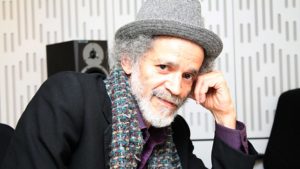 Last week, to support our Windrush learning, we watched this animation for a poem by John Agard. We provide a link below if you would like to share it together.
Last week, to support our Windrush learning, we watched this animation for a poem by John Agard. We provide a link below if you would like to share it together.
https://www.youtube.com/watch?v=VrgCVfXrQcs
Remember that there is no need to complete all of the learning below! The focus should be on maths, some aspects of the online English learning and reading and then maybe you could choose one other project to do from the home learning ideas? Or more if you want to obviously! Make this time at home enjoyable and treasure the time you are together having fun! Remember that you can send us a piece of the children’s work or an activity that they want to share every week on our class email addresses:
Turtleclass@stpeterswaterlooville.hants.sch.uk
Pufferfishclass@stpeterswaterlooville.hants.sch.uk
We would love to see what the children are getting up to at home!
Don’t forget to look at Sumdog for maths, reading and spelling challenges.
English reading and writing
In this weeks sequence of lessons you will be writing a set of instructions. The story used is Eddies Garden by Sarah Garland. See a link to the story online above. You will be doing some phonics focusing on the sound oi (spoil) and oy (boy) and as well as some spellings linked to the story (see below).
If it is a bit tricky or moves too fast for your child just focus on the key phonics being taught, or one version of the sound that your child knows e.g. oi and the key words. Maybe you could just work on one day of the online learning? Do what you feel your child can cope with. If you want an added challenge see if you can use some of the punctuation that we have been learning over the past few weeks such as the exclamation marks and editing using full stops and capital letters. Can you use the past tense in your account?
Eddies Garden by Sarah Garland
Here is a link to the story online. https://www.youtube.com/watch?v=OC0V3k_8F_U
To listen to a story
https://classroom.thenational.academy/lessons/to-listen-to-a-story-729700
To commit a set of instructions to memory
https://classroom.thenational.academy/lessons/to-commit-a-set-of-instructions-to-memory
To understand how to make a noun plural
https://classroom.thenational.academy/lessons/to-understand-how-to-make-a-noun-plural
To begin to write my instructions
https://classroom.thenational.academy/lessons/to-begin-to-write-my-instructions
To continue to write my instructions
https://classroom.thenational.academy/lessons/to-continue-to-write-my-instructions
Reading
We attach the link below because we feel it has some useful ideas. See page three. We are sure that you are doing many of them already!
Menu of reading response ideas KS1
The website below has lots of free to download ebooks suitable for laptops and tablets. You will need to register to access them but it is all free and the website has other information about different areas of literacy which you may find useful.
https://home.oxfordowl.co.uk/books/free-ebooks/
Spelling
Linking to the phonics and story this week:
Soil, moist, coin, toy, destroy, joy, firstly, finally. Some of these words are a bit tricky to write and remember. If so see if you can learn they, school and come from the common exception word list for year 1.
Maths
To share a total equally.
https://classroom.thenational.academy/lessons/to-share-a-total-equally-and-find-the-number-of-groups
To share a total equally.
To Explore arrays
https://classroom.thenational.academy/lessons/to-explore-arrays-part-one
To Explore arrays
https://classroom.thenational.academy/lessons/to-explore-arrays-part-two
To develop understanding of halves and quarters of quantities
Topic
The explorer of the Antarctic Ernest Shakleton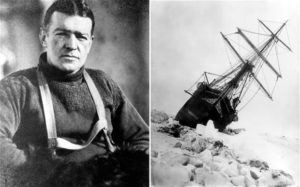
https://classroom.thenational.academy/lessons/who-was-sir-ernest-shackleton
This week we are going to learn all about a man called an ‘explorer’ who tried to get to the South Pole in Antarctica. He was called Ernest Shackleton. He was a very brave man and the Oaks Academy lesson tells you all about him. In the lesson you will see some real pictures of his exploring and learn about his amazing adventures.
The online lesson starts with a ‘quiz’ relating to lessons we have not done. Just click ‘quiz done’ and move on to the next screen and start the lesson at 3.20 minutes. (The first few minutes are recapping things we have not done)
The teacher asks the children to make a story map of his journey but if you would prefer to find out more about him use some of the links below and think about these questions.
- Why was it so hard for Shakleton to reach the South Pole?
- How do you think those men would have felt when they realised no one was going to come and rescue them?
- Would you want to go on this sort of adventure when there are no phones, TV or other methods of communication?
- Can you draw or paint a picture of the icy landscape and sinking ship? I think it would have been very frightening!
The teacher recommends the children’s book ‘Shakletons Journey’ by William Grill if you want to find out more about his adventures and life. You could also search the internet to see more photographs of the expedition by Frank Hurley. See below for one source.
Music
Week 6- The Hunters
Listen to this short piece of music and find a picture of the timpani.
What do you think the hunters are doing?
Can you create your own hunter music out of everyday objects?
Art
Art Challenge for Father Jeremy:
Father Jeremy has got a very special celebration coming up on 26th July this year. He will be celebrating 45 years since his ordination into the priesthood. I think this is a remarkable achievement and should be marked by your incredible artwork. Therefore, your Art challenge for the next fortnight is to produce a piece of art for Father Jeremy. This can take any form you like from street art, a drawing, collage or even some edible art! As well as being a priest, Father Jeremy has a wide range of interests including walking, reading and nature. So let you creative juices flow and come up with something spectacular….I know you will!
As I have mentioned, this is a two week challenge and I would ask that, as well as me displaying your art on the Blog, would you please keep hold of it (yes even sculptures you may make), so that I can collect it from you, when we are all back in school and put it in a book and then present in to Father Jeremy.
As always, you can still send any other art work to me and I will post that on the Blog too.
Please email your artwork to me:
n.pearson@stpeterswaterlooville.hants.sch.uk
Thank you
Keep creating and keep safe!
Mrs Pearson
Family Science Activity
Friday 3rd July
If your child has an allergy to eggs – please choose another exciting investigation from https://www.rigb.org/families/experimental
Bouncing Eggs
https://www.rigb.org/families/experimental/eggsperiments – watch the video
- Make an uncooked egg bounce!
- ExpeRiment with different liquids to see what effect they have on eggs.
- Learn how the acid in household liquids like orange juice and vinegar react with eggshells and make them dissolve, leaving the inside of the egg intact.
https://www.rigb.org/docs/dissolving_eggs_infosheet_v2_0_1.pdf – download worksheet for instructions and questions to ask before and after the investigation.
You will need:
5 eggs • Glasses or jars that an egg can fit inside comfortably • Cling film • Oil • Milk • Water • Vinegar • Orange juice
Going further challenge:
- You can use the shell-less eggs you make from this experiment to do another activity which will let you shrink and expand the eggs by placing them in different liquids: http://bit.ly/nakedeggs
- Watch a video of how to make a coloured bouncy egg, then try making one yourself: http://bit.ly/RubberEgg
Home learning 26th June.
Dear all
We have had another lovely week in school. We hope those of you at home are still keeping up with your learning and perhaps we will see more of you in school before the end of term? It is lovely to see more children coming in to school and enjoying being back with their friends and getting into the school routine. The weather has been so warm and it has been lovely to spend lots of time outside.
Remember that there is no need to complete all of the learning below! The focus should be on maths, some aspects of the online English learning and reading and then maybe you could choose one other project to do from the home learning ideas? Or more if you want to obviously! Make this time at home enjoyable and treasure the time you are together having fun! Remember that you can send us a piece of the children’s work or an activity that they want to share every week on our class email addresses:
Turtleclass@stpeterswaterlooville.hants.sch.uk
Pufferfishclass@stpeterswaterlooville.hants.sch.uk
We would love to see what the children are getting up to at home!
Don’t forget to look at Sumdog for maths, reading and spelling challenges.
English reading and writing
In this weeks sequence of lessons you will be learning about a fictional creature called a green-winged flay and over the week we will be writing our own information texts about our own fictional creatures. Miss Brown on the videos has made this creature up herself so there is no story for you to listen to! You will be doing some phonics ay (play), ai (train) and a-e (cake) focusing on the sound and as well as some spellings linked to the story (see below).
If it is a bit tricky or moves too fast for your child just focus on the key phonics being taught, or one version of the sound that your child knows e.g. ai and the key words. Maybe you could just work on one day of the online learning? Do what you feel your child can cope with. If you want an added challenge see if you can use some of the punctuation that we have been learning over the past few weeks such as the exclamation marks and editing using full stops and capital letters. Can you use the past tense in your account?
To listen to an information text
https://classroom.thenational.academy/lessons/to-listen-to-an-information-text
To create a creature
https://classroom.thenational.academy/lessons/to-create-a-creature
To develop my creature
https://classroom.thenational.academy/lessons/to-develop-my-creature
To be able to write my information text.
https://classroom.thenational.academy/lessons/to-begin-to-write-my-information-text
To continue to write my information text
https://classroom.thenational.academy/lessons/to-continue-to-write-my-information-text
Reading
We attach the link below because we feel it has some useful ideas. See page three. We are sure that you are doing many of them already!
Menu of reading response ideas KS1
The website below has lots of free to download ebooks suitable for laptops and tablets. You will need to register to access them but it is all free and the website has other information about different areas of literacy which you may find useful.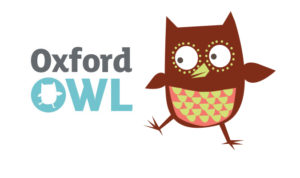
https://home.oxfordowl.co.uk/books/free-ebooks/
Spelling
Linking to the phonics and story this week:
Play, stay, plain, mainly, amaze, place, they and animal. Some of these words are a bit tricky to write and remember. If so see if you can learn they, little and like.
Maths
To find double and half of an amount.
https://classroom.thenational.academy/lessons/to-find-double-and-half-of-an-amount-of-money
To recognise and add equal groups.
https://classroom.thenational.academy/lessons/to-recognise-and-add-equal-groups
To add equal groups
https://classroom.thenational.academy/lessons/to-add-equal-groups
To solve problems using repeated patterns
https://classroom.thenational.academy/lessons/to-solve-problems-using-repeated-patterns
To share a total equally between a set number of groups.
Topic
Who lives in the Antarctic?
No humans live in Antarctica permanently. However, about 1,000 to 5,000 people live through the year at the science stations in Antarctica. Only plants and animals that can live in cold live there.
This little film show the living conditions for scientists at research stations in the Antarctic. It must be so cold!
https://www.youtube.com/watch?v=zbgkeca1nPc
Could you make a model of the Antarctic? Perhaps you cold include a research station along with their dogs and the resident penguins! We would love to see any models or pictures you make!
Music
The Wolf
Listen to this short piece of music and find a picture of a French horn.
How does this music make you feel?
What kind of character do you think the wolf is?
Can you draw a picture of him?
Art
Art Challenge: The Great Getaway! TRANSPORT
The title for your art this week is The Great Getaway! TRANSPORT. This can take the form of a drawing, a painting, a sculpture, a collage or anything else that you would like to create. As always, I’m sure you will impress me with your creativity!
Here are some ideas:
CHALLENGE: Design your own vehicle, maybe one that flies and can float on water!
However, if this doesn’t appeal to you then you can still send any other art work to me and I will post that on the Blog too. Please email your artwork to me:
n.pearson@stpeterswaterlooville.hants.sch.uk
Thank you
Keep creating and keep safe!
Mrs Pearson
Family Science Activity
Giant Bubbles
https://www.rigb.org/families/experimental/giant-bubbles – watch the video
· Make a home-bubble mixture and wands. Use them to look more closely at the characteristics and behaviour of soap bubbles.
· ExpeRiment with different shapes and sizes of bubbles and see what you can and cannot control about bubbles. Learn how to make giant bubbles and find out why bubbles are usually round.
· Learn how to make giant bubbles and find out why bubbles are usually round. https://www.rigb.org/docs/giantbubbles_infosheet_0_0.pdf – details on the information sheet.
You will need:
• Good quality washing up liquid
• Water
• Glycerin (optional)
• Plastic tub or other container for bubble mixture
• Measuring jug (optional)
• Various things with holes in them for blowing bubbles with. Watch the video for ideas. Straws, pipe cleaners, paperclips, coat hangers, cookie cutters and cake tins with removable bottoms are all particularly good.
• For giant bubbles: wooden spoons (or other sticks), a couple of metres of string and a small weight you can thread through it, like a metal key ring or nut.
What to do:
A mixture we found that works is 1 litre of water, 100ml of washing up liquid and 30 ml (2 tablespoons) of glycerin. Blow some bubbles!
Put a straw into your bubble solution and try blowing gently into the liquid. You should be able to make a lot of bubbles very quickly. Then dip one end of a straw into the solution, take it out and blow gently through the other end. See if you can control the size of bubble you can blow out of the straw.
Try making bubbles using things with bigger holes, like a paperclip or pipe cleaner bent into a circle. Try poking a dry finger into a bubble, then try the same thing after dipping your finger in bubble solution.
Try making bubbles inside bubbles by poking a straw dipped in bubble solution into an existing bubble and blowing again.
Try out objects with different shaped holes, like cookie cutters or pipe cleaners bent into other shapes. Try objects with really big holes, like a coat hanger or a cake baking tin with its bottom removed. Try making giant bubbles with the special wand we show you how to make in the video.
Going Further:
· You can experiment with your bubble mixture and giant bubble wand to see just how big you can get your bubbles to be. There are lots of different bubble mixture recipes on the internet, just search for “soap bubble recipe”.
· You could try making two or three of them and comparing how good the bubbles they make are.
Our school patronal feast day takes place on Sunday 28th June. In order to prepare for this special time of the year, please choose ONE of the following activities in order to learn more about St. Peter…
Jesus told Peter, ‘I will give you the keys to the Kingdom of Heaven’.
Design the keys and include as many symbols as you can to represent St. Peter and why he was so special. What would the keys be made of?
Jesus said to Peter, ‘You are a rock, and on this rock I will build my church’.
Could you paint or decorate a stone or pebble, to show ways in which to build God’s church?
(e.g. by spreading love, faith and Good News).
Take a look at the St. Peter’s logo on our school website. Can you re-design the crest so it reflects the qualities of St. Peter? (e.g. trust, hope, responsibility).
Why did Jesus say ‘feed my lambs’? How might St. Peter ask us to continue God’s work on earth?
Use the internet to research St. Peter – can you make a fact file about our school saint?
Which key words might you use as part of your factual information page?
Home learning 19th June
Dear all
We have had another lovely week in school. We hope those of you at home are still keeping up with your learning and perhaps we will see more of you in school before the end of term?
Some of the children in year 1 this week have been reading a book by David Walliams in class. Mrs Walls sent a message to David Walliams on social media saying how much the children had enjoyed it and he replied! Here is the message. How exciting !
On the 22nd June we mark Windrush day. This commemorates the people who came to the UK to help us 72 years ago. We have included some home learning to help you and your families learn a little and to think about what it must have been like to come such a long way from home and family to live in a new and cold country. You may want to find out more about their experiences together.
Remember that there is no need to complete all of the learning below! The focus should be on maths, some aspects of the online English learning and reading and then maybe you could choose one other project to do from the home learning ideas? Or more if you want to obviously! Make this time at home enjoyable and treasure the time you are together having fun! Remember that you can send us a piece of the children’s work or an activity that they want to share every week on our class email addresses:
Turtleclass@stpeterswaterlooville.hants.sch.uk
Pufferfishclass@stpeterswaterlooville.hants.sch.uk
We would love to see what the children are getting up to at home!
Don’t forget to look at Sumdog for maths, reading and spelling challenges.
English reading and writing
The Man On The Moon: ( A day in the life of Bob)
https://www.youtube.com/watch?v=Rt5zQ1UO6rE
To listen to a story
https://classroom.thenational.academy/lessons/to-listen-to-a-story-a1104f/
To commit a story to memory
https://classroom.thenational.academy/lessons/to-commit-a-story-to-memory-82ce18/
To use the first person and the past tense
https://classroom.thenational.academy/lessons/to-use-the-first-person-and-the-past-tense/
To begin to write our recount
https://classroom.thenational.academy/lessons/to-begin-to-write-our-recount/
To continue to write our recount
https://classroom.thenational.academy/lessons/to-continue-to-write-our-recount/
In this weeks sequence of lessons you will be learning about Bob and his job on the moon! We will be using the first person and thinking about using the past tense in our recount. You will be doing some phonics focusing on the sound or (short), aw (paw) and au (launch) as well as some spellings linked to the story.
If it is a bit tricky or moves too fast for your child just focus on the key phonics being taught, or one version of the sound that your child knows e.g. or and the key words. Maybe you could just work on one day of the online learning? Do what you feel your child can cope with. Recapping the past tense would be a good place to start. Tuesday’s learning suggests making a story map. Do this together and retell the story using your story map. The last 2 days are a recount but you do not need to write a sentence for every aspect of the story. The key thing is that you enjoy your writing and use the past tense and first person to demonstrate your new learning.
Reading
We attach the link below because we feel it has some useful ideas. See page three. We are sure that you are doing many of them already!
Menu of reading response ideas KS1
The website below has lots of free to download ebooks suitable for laptops and tablets. You will need to register to access them but it is all free and the website has other information about different areas of literacy which you may find useful.
https://home.oxfordowl.co.uk/books/free-ebooks/
Spelling
Linking to the phonics and story this week:
Saw, yawn, important, sweetcorn, launch, astronaut, two, some. Some of these words are a bit tricky to write and remember. If so see if you can learn put, one and some.
Maths
To use addition and subtraction in the context of money
To exchange money for items
https://classroom.thenational.academy/lessons/to-exchange-money-for-items/
To find the total cost of two items
https://classroom.thenational.academy/lessons/to-find-the-total-cost-of-two-items/
To calculate the amount of change needed
https://classroom.thenational.academy/lessons/to-calculate-the-amount-of-change-needed/
To calculate the amount of change needed
https://classroom.thenational.academy/lessons/to-calculate-the-amount-of-change-needed-6a081a/
History
The 22nd June is the annual Windrush day which celebrates the contribution of those people who came from the Carribean on ‘The Empire Windrush’ ship 72 years ago to start a new life in Britain. These people came across the sea to help the United Kingdom rebuild following the Second World War and they took on lots of different jobs including working in the NHS and on public transport like the buses as in the photos below!
Here are some photographs of the ship.
What do you think it would have felt like to move from your home to a totally new country?
What do you think you would expect to see?
Find out a little about the Caribbean. What would have been different or the same about living in England?
Music
Cat and Duck
Listen to this short piece of music and find a picture of a clarinet
Close your eyes and imagine the cat prowling around.
Can you prowl around like a cat hunting?
Now listen to this short piece of music and find a picture of an oboe.
How does the duck move differently to the cat?
Art
Art Challenge Feast Days
We have two important Feast Days in our Church calendar for June. The 19th June is the Feast of the Sacred Heart and 29th June is the Feast Day of St Peter and St Paul.
For your art challenge this week I would you to do a creation linked to either of these Feast Days.
The Sacred Heart of Jesus is an object of devotion and always falls 19 days after Pentecost.
As you know, St Peter was given the ‘keys to heaven’ by Jesus and was our first Pope and in Matthew Ch16v18 Jesus said ‘And I tell you, you are Peter, and on this rock I will build my church.’ He is also the Patron St of fishermen. St Paul changed from not believing in Christianity to spreading the word through the letters that he wrote. Naturally, he is the Patron St of writers.
Ideas to inspire you:
Alternatively, you could do artwork to do with the Patron St that you have been linked to in school (England St George; Scotland St Andrew; Ireland St Patrick: Wales St David), or the Patron St of your home country.
However, if this doesn’t appeal to you, then you can still send any other art work to me and I will post that on the Blog too.
Please email your artwork to me:
n.pearson@stpeterswaterlooville.hants.sch.uk
Thank you.
Family Science Activity
Balloon Car Racers
https://www.rigb.org/families/experimental/balloon-car-racers – to watch the video
The activity – Make cars which are propelled by balloon power.
ExpeRiment with designs and see what factors affect how fast or how far your car goes.
Learn how a balloon car works just like a rocket.
https://www.rigb.org/docs/ballooncarracers_infosheet_1_1.pdf – to view the information sheet
What to do:
- Make a balloon car based on the instructions Mark gives in the video.
- Decide how you will judge what makes a ‘good’ car – is it how far it goes or how fast it goes?
- Investigate what happens if you have bigger or smaller wheels (you can use other types of lids or make wheels from cardboard and use blu-tac or glue to attach them to the kebab skewers).
- Investigate what happens if you change the design of your car in other ways – you can watch the video again for inspiration for other designs.
Going further challenge:
- Measure how far your car travels using a tape measure.
- Time how fast your car travels ½ a metre – would double the speed be the time that your car would travel 1 metre? Test it out.
- You can find the speed of your car in metres per second using a stopclock and a tape measure: Measure the distance the car travels (in metres) then dividing that distance by the time it took to travel (in seconds).
Home learning 12th June
Dear all
It has been lovely to see so many of you back in school. For those of you at home we hope you are keeping safe and managing to continue with some home learning. Remember that you can focus on topics and learning that really interest you too. If you go for a walk or to the beach can you do some research, write a poem or draw a picture of what you found there?
Remember that there is no need to complete all of the learning below! The focus should be on maths, some aspects of the online English learning and reading and then maybe you could choose one other project to do from the home learning ideas? Or more if you want to obviously! Make this time at home enjoyable and treasure the time you are together having fun! Remember that you can send us a piece of the children’s work or an activity that they want to share every week on our class email addresses:
Turtleclass@stpeterswaterlooville.hants.sch.uk
Pufferfishclass@stpeterswaterlooville.hants.sch.uk
We would love to see what the children are getting up to at home!
Don’t forget to look at Sumdog for maths, reading and spelling challenges.
English reading and writing
A Very Noisy Night! By Diane Henry You can easily find this on youtube to support your learning!
To listen to a story
https://classroom.thenational.academy/lessons/to-listen-to-a-story
To commit a story to memory
https://classroom.thenational.academy/lessons/to-commit-a-story-to-memory-4ca7c8
To use exclamation marks
https://classroom.thenational.academy/lessons/to-use-exclamation-marks
To begin to write our story
https://classroom.thenational.academy/lessons/to-begin-to-write-our-story-e60c4f
To continue to write our story
https://classroom.thenational.academy/lessons/to-continue-to-write-our-story-f375f0
In this weeks sequence of lessons you will be learning about the story of ‘The Very Noisy Night: by Diane Henry.’ You will be doing some phonics focusing on the sound ow (cow), ou (sound) as well as some spellings linked to the story.
If it is a bit tricky or moves too fast for your child just focus on the key phonics being taught, or one version of the sound that your child knows e.g. ow and the key words. Maybe you could just work on one day of the online learning? Do what you feel your child can cope with. The story map may take some time so perhaps concentrate on verbally retelling the story rather than drawing it out? Then there will be more time to write their own retelling of the story. As a challenge see if the children can add some interesting vocabulary to make their sentences more interesting for the reader?
Reading
We attach the link below because we feel it has some useful ideas. See page three. We are sure that you are doing many of them already!
Menu of reading response ideas KS1
The website below has lots of free to download ebooks suitable for laptops and tablets. You will need to register to access them but it is all free and the website has other information about different areas of literacy which you may find useful.
https://home.oxfordowl.co.uk/books/free-ebooks/
Spelling
Linking to the phonics and story this week:
now, howl, owl, mouse, house, sound, once, push, come (highlighted are the year 1 common exception words)
Maths
To identify the physical properties of coins.
If the coin denominations used prove too tricky for your child, use those coins with which they are familiar to find totals and make equal amounts.
To recognise the value of different coins.
https://classroom.thenational.academy/lessons/to-recognise-the-value-of-different-coins-b1b5b6/
To recognise the value of different coins.
https://classroom.thenational.academy/lessons/to-recognise-the-value-of-different-coins-and-notes/
To compare different amounts of money.
https://classroom.thenational.academy/lessons/to-compare-different-amounts-of-money/
Topic
What do humans need to live in such a cold environment?
Watch this film about some teachers who go to Antarctica and how they kept warm and got around! Can you imagine what it might be like to live somewhere so cold? What clothes would you need? Can you design a set of clothes that you might wear? Include shoes, hat and gloves and warm layers!
https://www.stem.org.uk/elibrary/resource/31005
Music
Week 3- Bird
Listen to this short piece of music and find the picture of the flute.
Is the pitch of this music low or high?
What do you think the bird is doing in the story?
Can you find some everyday objects that make a high pitch?
Religious education
Following the celebration of Pentecost in our Church calendar, we would like you continue to reflect upon our Mission and how we can ‘use the gifts God gave us to make our world a better place’.
Just as the Holy Spirit had appeared to the Apostles of Jesus and gave them hope while they were in Jerusalem, we would like you to consider how YOU can use the power of the Holy Spirit to support and encourage others.
Can you complete ONE of the following activities, to explore how we can continue God’s work on Earth as His followers?
*Write a prayer to Jesus thanking him for sending the Holy Spirit to the disciples.
*Create a Pentecost wind twirl. You could write your prayer on it.
*Retell the story. Perform it to your family.
*Learn this song.
Art
Key Stage One
For your art challenge this week I would like you to do a creation linked to a Nursery Rhyme or book. This could be a collage picture of Humpty Dumpty made out of egg shells, a wanted poster of the Big Bad Wolf, or the witch from one of my favourite books, ‘Room on a Broom.’ You may even do your art in the woods, such as leaving the Gruffalo’s footprints or make a small stick house. It can be a picture using any materials or a 3D creation. Let your fantastic imaginations go wild!
WOW! CHALLENGE: Learn the Nursery Rhyme or a page from the book and perform it to your family.
Ideas to inspire you:
However, if this doesn’t appeal to you, then you can still send any other art work to me and I will post that on the Blog too.
Please email your artwork to me:
n.pearson@stpeterswaterlooville.hants.sch.uk
Thank you
Keep creating and keep safe!
Mrs Pearson
Family Science Activity
**Please note that this activity must be carried out in the presence of an adult to ensure safety**
Safety advice for parents
- Do the activity on a table which is cleared of any other flammable objects or materials. Use your judgement as a parent to decide whether or not to let your child light the candles on their own.
- Make sure you’ve blown out any candles after doing the activity. Don’t move a lit candle when doing this activity. Don’t allow your child to touch the wick or candle until it has completely cooled.
- Don’t leave a lit candle unattended at any time. There’s more extensive safety advice on using candles from the UK Fire Service here: http://bit.ly/BeFireSafe
The activity
- Make a blown out candle relight as if by magic.
- ExpeRiment to find out how long a candle will burn in different amounts of air.
- Learn about the chemistry of how a candle burns.
https://www.rigb.org/families/experimental/candle-chemistry
What you will need
- At least one tea light or other small candle.
- Gas-powered cooker lighter (or long handled matches).
- Glass jars or glasses of various sizes.
- Stopwatch (maybe the one on your smartphone) or other way of measuring time.
What to do
https://www.rigb.org/docs/candlechemistry_infosheet_0_1.pdf – for information sheet about the activity.
Going Further Challenge:
Learn more facts about fire: http://bit.ly/FireFacts
Make a carbon dioxide fire extinguisher for your candles: http://bit.ly/CO2Ext
Watch a video on how candles are made: http://bit.ly/CandlesMade
Use a candle to suck water into a glass like Josh does at the end of the film: http://bit.ly/WaterCandle
Home learning 5th June 2020
Dear all
We hope that all of the children are enjoying getting back into their learning, either in school or at home this week. As we mentioned last week, the children in school are following the home learning set for those at home so that all of the children have the opportunity to access the same learning. It has been lovely to see lots of you in school and to catch up on what you have been doing in your time away. We hope it will be a fun half term to come!
Remember that there is no need to complete all of the learning below! The focus should be on maths, some aspects of the online English learning and reading and then maybe you could choose one other project to do from the home learning ideas? Or more if you want to obviously! Make this time at home enjoyable and treasure the time you are together having fun! Remember that you can send us a piece of the children’s work or an activity that they want to share every week on our class email addresses:
Turtleclass@stpeterswaterlooville.hants.sch.uk
Pufferfishclass@stpeterswaterlooville.hants.sch.uk
We would love to see what the children are getting up to at home!
Don’t forget to look at Sumdog for maths, reading and spelling challenges which will be updated each week. See also mymaths for maths challenges.
English reading and writing
To listen to a poem and act it out
https://www.thenational.academy/year-1/english/to-listen-to-a-poem-year-1-wk6-1
To identify rhyming words
https://www.thenational.academy/year-1/english/to-identify-rhyming-words-year-1-wk6-2
To identify onomatopoeia
https://www.thenational.academy/year-1/english/to-identify-onomatopoeia-year-1-wk6-3
To plan a poem
https://www.thenational.academy/year-1/english/to-plan-our-poem-year-1-wk6-4
To write a poem
https://www.thenational.academy/year-1/english/to-write-our-poem-year-1-wk6-5
In this weeks sequence of lessons you will be thinking about poetry. It would help if you had a magic wand!! You will be doing some phonics focusing on the sound ur (nurse), er (letter) and ir (first) as well as some spellings linked to the story.
If it is a bit tricky or moves too fast for your child just focus on the key phonics being taught, or one version of the sound that your child knows e.g. ur or er and on writing some simple sentences or key words. Maybe you could just work on one day of the online learning? Do what you feel your child can cope with.
Reading
We attach the link below because we feel it has some useful ideas. See page three. We are sure that you are doing many of them already!
Menu of reading response ideas KS1
Also see the Collins connect PDF (see blog post for link) for access to lots of books to read online.
ONLINE READING COLLINS CONNECT
Spelling
These are the spellings highlighted in the Oak Academy online English learning:
first, bird, fur, nurse, teacher, faster, some, into.
Most of these words are to reinforce the phonics learning this week. Some and into should be familiar to all of the children!
Maths
To solve word problems
https://www.thenational.academy/year-1/maths/to-solve-word-problems-year-1-wk6-1
To explore addition and subtraction
https://www.thenational.academy/year-1/maths/to-explore-addition-and-subtraction-year-1-wk6-2
To explore addition and subtraction
https://www.thenational.academy/year-1/maths/to-explore-addition-and-subtraction-year-1-wk6-3
To solve problems in context using addition and subtraction
To solve problems in context using addition and subtraction
Topic
Antarctic animals and how they have adapted for life in the freezer!
Look up the twinkl powerpoint ‘Antarctic animals: what can you see?’ and see if you can talk with your grown up about what you think the animal might be that has been hidden? What do you already know about the animal?
https://www.twinkl.co.uk/resource/antarctic-animals-what-can-you-see-powerpoint-t-tp-2549081
The second link takes you to a website which explains a little more about each animal and how they have adapted to the harsh cold environment in which they live. https://www.coolantarctica.com/Antarctica%20fact%20file/wildlife/antarctic_animal_adaptations.php
Talk this through with your adult. Do you think there are any animals in the British Isles that may need the same sort of adaptations? Why do you think that? Can you choose your favourite animal and write a fact file about how it has adapted for living in freezing conditions. Can you draw and label a picture too?
The second link takes you to a website which explains a little more about each animal and how they have adapted to the harsh cold environment in which they live. https://www.coolantarctica.com/Antarctica%20fact%20file/wildlife/antarctic_animal_adaptations.php
Talk this through with your adult. Do you think there are any animals in the British Isles that may need the same sort of adaptations? Why do you think that? Can you choose your favourite animal and write a fact file about how it has adapted for living in freezing conditions. Can you draw and label a picture too?
Music
Week 2- Grandfather
Listen to this short piece of music and find the picture of the bassoon.
What mood do you think Grandfather is in?
How do you think grandfather might move?
How is this music the same or different to Peter’s music?
Family Science Activity
https://www.rigb.org/families/experimental/homemade-lava-lamp
ExpeRiment with objects of different shapes and sizes. See what makes a difference to whether something sinks or floats in water.
Learn how an object’s density affects if something is likely to sink or float.
https://www.rigb.org/docs/lavalamp_infosheet_0_1.pdf
Questions to ask children:
- Before each activity: can you predict what will happen? Why do you predict that? (For example, can you predict what will happen when we squash the tin foil really tightly?
- Can you predict what will happen if we use metal spoon instead of a plastic one?
- Can you predict what will happen if we peel the fruit?) Why does the diet drink float while the non-diet one sinks?
- What do you think will happen when we pour the oil into the glass of water? Why?
- What do you think is in the bubbles that are rising up in the lava lamp? Why do you think they sink back down again?
Going Further:
- You can give your child or children a lump of plasticine and explore how to mould the plasticine into shapes that float. Discuss what the floating shapes have in common compared to shapes that sink.
- The density of an object affects its buoyancy. You can learn more about this and how density affects whether something sinks or floats here: http://bit.ly/
- Buoyancy You can try to make a ‘density tower’ by floating liquids of different density on top of each other, as shown in this video: http://bit.ly/DensityTower
- Here’s a quick lava lamp using fizzy water – http://bit.ly/FizzyLavaLamp
ART
Read all about it! St Peter’s are IN THE NEWS!
For this week’s Art Challenge I would like you to produce some art using old newspapers or magazines! It can be anything from cutting out shapes and creating your own abstract art, or landscape, to making something using Paper Mache. What you make can be left black and white or even painted (using watercolours is very effective). Whatever you create I’m sure you will ‘Make the headlines’ on the Art Blog!
Ideas to inspire you:
However, if this doesn’t appeal to you can still send any other art work to me and I will post that on the Blog too.
Please email your artwork to me:
n.pearson@stpeterswaterlooville.hants.sch.uk
Thank you
Home learning 29th May
Dear all
We hope that you have all had a lovely half term break. We look forward to welcoming some of you back to school on the 1st. The learning below is that which we will be using to teach those in school so that the experience for children will be as consistent as it can be in these strange times!
Remember that there is no need to complete all of the learning below! The focus should be on maths, some aspects of the online English learning and reading and then maybe you could choose one other project to do from the home learning ideas? Or more if you want to obviously! Make this time at home enjoyable and treasure the time you are together having fun! Remember that you can send us a piece of the children’s work or an activity that they want to share every week on our class email addresses:
Turtleclass@stpeterswaterlooville.hants.sch.uk
Pufferfishclass@stpeterswaterlooville.hants.sch.uk
We would love to see what the children are getting up to at home!
Don’t forget to look at Sumdog for maths, reading and spelling challenges which will be updated each week. See also mymaths for maths challenges.
English reading and writing
https://www.thenational.academy/year-1/english/terrifying-t-rex-year-1-wk5-1#slide-2
https://www.thenational.academy/year-1/english/to-commit-an-information-text-to-memory-year-1-wk5-2
https://www.thenational.academy/year-1/english/to-understand-how-to-use-the-past-tense-year-1-wk5-3
https://www.thenational.academy/year-1/english/to-start-to-write-our-information-text-year-1-wk5-4
https://www.thenational.academy/year-1/english/to-start-to-write-our-information-text-year-1-wk5-4
In this weeks sequence of lessons you will be learning about the story of ‘Terrifying T-Rex.’ You will be doing some phonics focusing on the sound oo (smooth), ew (grew) and u-e (flute) as well as some spellings linked to the story.
On day 1 you will answer questions on the information text, day 2 committing the information text to memory, day 3 understanding how to use the past tense, day 4 and 5 starting and completing writing an information text.
If it is a bit tricky or moves too fast for your child just focus on the key phonics being taught, or one version of the sound that your child knows e.g. oo and on verbally retelling the story and writing some simple sentences or key words. Maybe you could just work on one day of the online learning? Do what you feel your child can cope with. At the very least you can enjoy learning about T Rex together.
Reading
We attach the link below because we feel it has some useful ideas. See page three. We are sure that you are doing many of them already!
Menu of reading response ideas KS1
Also see the Collins connect PDF (see blog post for link) for access to lots of books to read online.
ONLINE READING COLLINS CONNECT
Spelling
Choose a set 1 or set 2 and practise spelling.
Set 1: they, your, of, all
Set 2: house, full, our, ask
We know that you will have had some of these spellings before but revisiting and consolidating will ensure that you can use them independently in context in your writing.
Maths
To apply knowledge of number bonds
https://www.thenational.academy/year-1/maths/to-apply-knowledge-of-number-bonds-year-1-wk5-1
To add two-digit numbers and ones
https://www.thenational.academy/year-1/maths/to-add-two-digit-numbers-to-ones-year-1-wk5-2
To subtract two-digit numbers and ones
https://www.thenational.academy/year-1/maths/to-subtract-two-digit-numbers-and-ones-year-1-wk5-3
To add two-digit numbers to ones with regrouping
To subtract two-digit numbers to ones with regrouping
Peter and the Wolf
Week 1- Peter
Listen to this short piece of music and find the picture of a violin?
How does the music make you feel?
Can you move around to it?
Topic
This week we are introducing our new topic of ’Antarctica’. In this topic we hope to explore where the region is in comparison to where we are, to compare weather conditions, housing and people as well as think about animals and how they live in this challenging environment.
This week we are going to start by thinking about where Antarctica is and any special features about its geography and climate. Watch these 2 short films and then chat to your adult about what you have learnt. Perhaps your adult may pause the film from time to time to talk about what you can see?
https://www.bbc.co.uk/bitesize/topics/zyhp34j/articles/zjg46v4
https://www.youtube.com/watch?v=X3uT89xoKuc
Have a look in an atlas or a world map and see if you can find where the Antarctic is. Can you make a fact file about what you have learnt so far?
Art
ANIMAL MAGIC!
For this week’s Art Challenge I would like you produce some art that is linked to ANIMALS! Your animal can live on the land, in the sea or the sky. If you prefer, you can make your own mythical animal from your own imagination… or even a fusion of two animals. It can be a drawing, a painting, it can be made from a kitchen roll tube, a painted stone, made from things you find in the woods or at the beach or anything else that you can think of. I’m sure you will create something ‘magical’, as always!
Ideas to inspire you:
However, if this doesn’t appeal to you can still send any other art work to me and I will post that on the Blog too.
Please email your artwork to me:
n.pearson@stpeterswaterlooville.hants.sch.uk
Thank you
Keep creating and keep safe!
Mrs Pearson
Family Science Activity
Spinema
https://www.rigb.org/families/experimental/spinema
We’re all used to seeing films and animations. This activity is all about understanding a bit more about how these work, and why our brains perceive what is actually a series of still images as flowing motion.
Click this link to see vintage images from the early days of animation https://ri-science.tumblr.com/search/muybridge
By making a thaumatrope, you can learn about ‘persistence of vision’, as two images pass by your eyes so quickly that you are still processing one when you see the next, so your brain merges the two together to see a complete image.
A phenakistoscope works just like classic animation and movies. By rapidly showing one image after the other, each slightly different to the one before, a sense of movement is created. This known as ‘beta movement’, and is the basis of any moving image you see on a screen.
The activity
- Make a thaumatrope and a phenakistoscope – templates are available to download or you can draw your own.
- ExpeRiment with animation.
- Learn how we process images and motion.
https://www.rigb.org/docs/spinema_infosheet_0.pdf
Questions to ask children
Before the activity: What types of cartoon/animation do you know? How do they make drawings or models seem to move?
After the activity: What differences are there in the images? What would happen if we spun the disc in the opposite direction? What if we spun them faster/slower? What would happen if the phenakistoscope had more/less drawings?
Going further
Try making a flip book. You can see how at rigb.org/ExpeRimental.
22nd May
We will not be setting any home learning over the half term holiday so that you and the children can have a well earned rest! Thank you so much for the support you have given us and the children over the last weeks. We are so pleased to hear in our phone calls and to see in your emails the learning that is going on at home in these difficult circumstances. If you have some time and your child is keen you could always continue with some reading and practising number facts and possibly catching up on any of the activities you may have missed over the last few weeks. But that is totally your choice! Enjoy this time together free from the pressures of home teaching!
As a staff team we are all getting ready and looking forward to welcoming many of you back to school as soon as we can.
Keep safe and take care
Love from all in the year 1 team.
Home learning 15th May 2020
We will start this week with some teacher news!! Home learning further on in the blog!
Mrs Cass
HOME LEARNING
Dear all
Here is our home learning for the week including our weekly family science activity and music exploration. We so hope that you enjoy this learning together. We are looking forward to seeing the castles you have made! May we take this opportunity to say that there is no need to complete all of the learning below! The focus should be on maths, some aspects of the online English learning and reading and then maybe you could choose one other project to do from the home learning ideas? Or more if you want to obviously! Make this time at home enjoyable and treasure the time you are together having fun! Remember that you can send us a piece of the children’s work or an activity that they want to share every week on our new class email addresses:
Turtleclass@stpeterswaterlooville.hants.sch.uk
Pufferfishclass@stpeterswaterlooville.hants.sch.uk
We would love to see what the children are getting up to at home!
Don’t forget to look at Sumdog for maths, reading and spelling challenges which will be updated each week. See also mymaths for maths challenges.
English reading and writing
Listen to a version of the book here!
https://www.youtube.com/watch?v=BXgW9UCgpc8
In this weeks sequence of lessons you will be learning about the story of ‘The Tiger Who Came To Tea.’ You will be doing some phonics focusing on the sound ee (feet), ea (tea) and y (happy) as well as some spellings linked to the story.
On day 1 you will be predicting the story, day 2 committing the story to memory and drawing a story map, day 3 identifying and writing questions (revisiting skills we have learnt in class), day 4 and 5 starting and completing writing a story.
If it is a bit tricky or moves too fast for your child just focus on the key phonics being taught, or one version of the sound that your child knows e.g. ee, and on verbally retelling the story and writing some simple sentences or key words. Maybe you could just work on one day of the online learning? Do what you feel your child can cope with. At the very least you can enjoy listening to the story on you tube.
https://www.thenational.academy/year-1/english/the-tiger-who-came-to-tea-year-1-wk4-1
https://www.thenational.academy/year-1/english/to-commit-a-story-to-memory-year-1-wk4-2
https://www.thenational.academy/year-1/english/to-start-to-write-our-story-year-1-wk4-4
https://www.thenational.academy/year-1/english/to-write-the-end-of-our-story-year-1-wk4-5
Reading
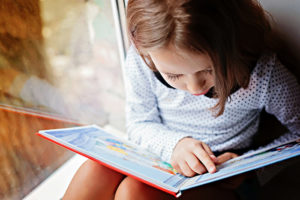 We attach the link below because we feel it has some useful ideas. See page three. We are sure that you are doing many of them already!
We attach the link below because we feel it has some useful ideas. See page three. We are sure that you are doing many of them already!
Menu of reading response ideas KS1
Also see the Collins connect PDF (see blog post for link) for access to lots of books to read online.
ONLINE READING COLLINS CONNECT
Spelling
Choose a set 1 or set 2 and practise spelling.
Set 1: was, have, are said
Set 2: looked, called, asked, people
We know that you will have had some of these spellings before but revisiting and consolidating will ensure that you can use them independently in context in your writing.
Maths
Watch these videos. We hope that you have been having fun with the online maths learning. Remember to do what you can. There is no expectation to complete it all!
LO: To identify patterns within a sequence of numbers
To compare numbers within 100 on a place value chart
To order numbers within 100
https://www.thenational.academy/year-1/maths/to-order-numbers-within-100-year-1-wk4-3
To order numbers within 100
https://www.thenational.academy/year-1/maths/to-order-numbers-within-100-year-1-wk4-4
To identify patterns within a sequence of numbers
Science
This week we are going to learn a bit more about where some minibeasts in our environment live – their habitat.
Have you ever wondered where worms live? What they eat?
Make your own wormery. It’s really easy! Use the website.
https://schoolgardening.rhs.org.uk/Resources/Activity/Mini-wormery
Topic
We have learnt so much about castles! Can you make a model of a castle out of junk in your home? Can you add some of the defensive features that castles had to keep invaders out? Have a look at some photographs on line or use your imagination to create your own fantasy castle fit for a knight or princess. The links below show different ways you could make a castle but you can let your imagination run riot and use whatever junk you have at home!
https://www.youtube.com/watch?v=_BfmWyeZU38
Music
Persons with Long Ears
Listen to the violin.
https://www.youtube.com/watch?v=VQfgeutobG8
Is this music sad or happy?
Which kind of animals might have long ears?
Art
Art Challenge Famous Landmarks:
For this week’s Art Challenge I would like you produce some art that is linked to a famous landmark. Your landmark can be natural or man-made. It can be a drawing, a sculpture made from recycled materials, a collage, something made out of pebbles and twigs , it could be drawn on a tablet or made out of Lego, or indeed else that you can think of. I have even seen Big Ben made out of socks! Let you imaginations run wild!
Here are a couple of ideas:
However, if this doesn’t appeal to you can still send any other art work to me and I will post that on the Blog too.
Please email your artwork to me:
n.pearson@stpeterswaterlooville.hants.sch.uk
Thank you
Keep creating and keep safe!
Mrs Pearson
Family Science Activity
Balancing Structures
The activity – Make a balancing toy.
Experiment with the design of your toy to find out what affects whether or not it balances.
Learn about the centre of mass of an object and how it relates to whether or not something balances.
https://www.rigb.org/docs/balancing_sculptures_infosheet_0_0.pdf
activity worksheet in full
What you need:
- A carrot or similar vegetable
- Kebab skewers
- Marshmallows and/or other jelly type sweets, or small pieces of carrot or similar hard vegetables.
- Plasticine or blu-tac
- 500ml soft drink bottle or washing up liquid bottle
Stage 1: Cut a piece of carrot about 3 cm long. Stick a kebab skewer into one end of the piece of carrot and break the skewer so that you have only 2 or 3 cm of it sticking out. Try to stand the carrot piece up on the end of the kebab skewer – you should find this very difficult, if not impossible to do.
Stage 2: Stick a kebab skewer into each side of the carrot so that they point downwards at about 45 degrees. Then stick a marshmallow or other jelly sweet onto the ends of the skewers, as shown in the picture below. Place this on top of a bottle and you should find that it balances.
Get children to investigate what happens when you slide the marshmallows up and down the ‘arms’ of the sculpture and if you add more marshmallows. Stick an additional two or more kebab skewers into the carrot and challenge children to add at least one item to each skewer and still keep the sculpture balanced.
Questions to ask children: With just central part of the sculpture: why doesn’t this stay balanced? Before showing them stage 2: do you think we can use more kebab skewers and anything else to help it balance? Why do you think it balances like this? What can we change? (position of skewers, items pushed onto the skewers, position of things on skewers) What do you think will happen if we change these things? What do you think we need to do to make sure our sculpture balances?
Going further:
Try making some animal-shaped balancing toys: http://bit.ly/AniBalance
Make a balancing butterfly: http://bit.ly/BalanceButterfly
Home learning 8th May.
For teacher news and art home learning please see posts below this one!
Dear all
Here is our home learning for the week including our weekly family science activity and music exploration. We so hope that you enjoy this learning together. May we take this opportunity to say that there is no need to complete all of the learning below! The focus should be on maths, English and reading and then maybe you could choose one other project to do from the home learning ideas? Or more if you want to obviously! Make this time at home enjoyable and treasure the time you are together having fun!
Remember that you can send us a piece of the children’s work or an activity that they want to share every week on our new class email addresses:
Turtleclass@stpeterswaterlooville.hants.sch.uk
Pufferfishclass@stpeterswaterlooville.hants.sch.uk
We would love to see what the children are getting up to at home! Thank you to all of you who have sent in pictures so far. Keep them coming!
Just a reminder about the letter that Mr Cunningham sent you last week from the DFE. It will have daily phonics lesson for the children following the letters and sounds programme that we use in school. We hope it is helpful!
Don’t forget to look at Sumdog for maths, reading and spelling challenges which will be updated each week. See also mymaths for maths challenges.
English reading and writing
In this weeks sequence of lessons you will be learning about the story of ‘St George and the Dragon’. You will be doing some phonics focusing on the sound oa (goat), ow (snow) and o-e (bone) as well as some spellings linked to the story. You will be learning all about St George, who he was and learning a bit about the geography of the United Kingdom in the process! As last week you will be committing the story to memory and making a story map. Then you will be developing a character description of a dragon and describing its personality using some great adjectives to describe him/her. Have fun!
If it is a bit tricky or moves too fast for your child just focus on the key phonics being taught, or one version of the sound that your child knows e.g. oa, and on verbally retelling the story and writing some simple sentences rather than retelling the whole story. Drawing and labelling the dragon will be a great activity for all to tackle. Do what you feel is right for your child.
If you have no or poor access to a computer or similar see if you can find out about the story of St George and the Dragon and follow the plan as outlined above. This is a nice sequence of activities that you can do without a computer!
https://www.thenational.academy/year-1/english/saint-george-and-the-dragon-year-1-wk3-1
https://www.thenational.academy/year-1/english/to-commit-a-story-to-memory-year-1-wk3-2
https://www.thenational.academy/year-1/english/to-describe-a-characters-appearance-year-1-wk3-3
https://www.thenational.academy/year-1/english/to-describe-a-characters-personality-year-1-wk3-4
https://www.thenational.academy/year-1/english/to-write-a-character-description-year-1-wk3-5
Reading
We attach the following link again as it has some useful ideas. See page three. We are sure that you are doing many of them already!
Menu of reading response ideas KS1
Also see the Collins connect PDF below for access to lots of books to read online.
ONLINE READING COLLINS CONNECT
Spelling
Choose a set 1 or set 2 and practise spelling.
Set 1: love, her, pull, put
Set 2: their, could, because, were
Try writing these in different ways: can you ‘write’ them on the back of someone in your house?
Maths
This week we will be exploring numbers to 100. Follow this sequence of lessons.
To recognise, read and write numbers to 100
https://www.thenational.academy/year-1/maths/to-recognise-read-and-write-numbers-to-100-year-1-wk3-1
To explore the components of numbers within 100
To explore the components of numbers within 100
To apply knowledge of number bonds.
https://www.thenational.academy/year-1/maths/to-apply-knowledge-of-number-bonds-year-1-wk3-4
To find one more or one less and ten more or ten less.
This week we are going to think a bit more about where the minibeasts in our environment live – their habitat. When you have looked outside at minibeasts in your garden or park did you notice anything different about the sorts of places that they live? Were some out in the sunshine while others lived in cold, damp and dark places? Are some up in trees and bushes while others live underground? Did they all live together as a ‘family’ or are they insects that live on their own? Go and have a look outside and note down any observations you can make about their ‘habitat’. This little video shows a few different minibeasts in their habitats. The way that the bees and ants live is so clever!
https://www.youtube.com/watch?v=JuHg5oWF_mo
Topic
Can you find out about what it was like to live and work in a mediaeval castle? What sorts of jobs did people in a castle do? What is the job of an armorer? Or the apothecary? And what was a cordwainer?! See if someone at home can help you to use the computer to do some research about jobs in a castle and then make a fact file with pictures to show what you have find out about the different jobs.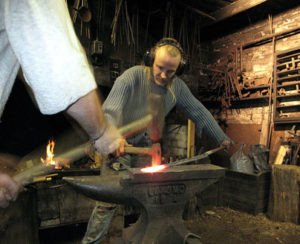
The video below is quite long and aimed at older children / adults but is quite interesting in talking about who and how you become an armourer and with some modern day demonstration of how armour was made. Your adult might like to find some bits in the video that may be interesting to you! It is a bit longwinded!
https://www.youtube.com/watch?v=NsNPNxq7re0
Music
Listen carefully to the music.
https://www.youtube.com/watch?v=oCUtOKsmOZ8
Can you spot when it gets loud and quiet?
What might live in the aquarium? What else might you see?Could you create an aquarium in a bowl of water? How might the animals move around?
Family Science Activity – Friday 8th May
THE SCIENCE OF OOBLECK
https://www.science-sparks.com/how-to-make-oobleck/
Did you notice that if you make a ball with oobleck or gloop it feels solid, but if you drop the oobleck on the floor it turns liquid again? The slime is a non – Newtonian fluid as it doesn’t flow like liquids normally do.
https://www.youtube.com/watch?v=Fnd-2jetT1w
Cornflour gloop ( oobleck ) is made up of molecules arranged in long chains. When the chains are stretched the liquid will flow, but when you force them together they stick together to form a solid.
OOBLECK RECIPE
- Cornflour
- Water
- Food colouring – optional
- Ice cube trays – optional
- Mixing bowl
- Colander, funnel and beakers – optional, but great for messy fun!
INSTRUCTIONS FOR MAKING CORNFLOUR GLOOP
- Fill a cup with cornflour and add to the bowl
- Add water very slowly mixing with your hands, until you get a sticky, slimy gloop.
- If you want to make it coloured add some food colouring. ( be careful this can stain skin and clothes)
- Play with the slime and see how it behaves. Can you make it into a ball? and what happens if you throw it onto the floor?
- Can you squeeze the slime into a ball? What does it feel like? How long does the ball stay solid after you let go?
- If you used less water do you think the slime would fall faster or more slowly through the colander?
OOBLECK CHALLENGE
Can you make a giant oobleck tray and walk on oobleck?
HOW TO MAKE A GIANT OOBLECK TRAY
To make our giant oobleck tray – pour about 1 kg of cornflour into a large black tray and slowly added water until the consistency was wet, but solid when squeezed.
Friday 8th May – Religious education
| Subject knowledge: Fifty days after his resurrection, the Lord sent the Holy Spirit down from heaven upon his disciples. The age of the church began. Pentecost shows that the church is there for all peoples from the very beginning. |
As part of your RE learning, we would like you to focus upon the upcoming celebration of Pentecost
- Watch a video on YouTube or read from the gospel, Act 2 1-13.
When did the Pentecost happen?
What did Jesus promise?
How did the disciples feel before and after the spirit came?
- Retell the story using pictures or your toys.
- Draw, paint or create your favourite part of the story.
Key Verse: John 3:8 “The wind blows where it wishes and you hear the sound of it, but do not know where it comes from and where it is going; so is everyone who is born of the Spirit.”
Materials Needed:
One square piece of paper, scissors ,one split pin, pencil, crayons, coloured pencils, and stickers for decorating the pinwheels.
Instructions:
Fold the paper on the diagonal from corner to corner. Open the paper up and fold on the second diagonal across the other two corners. When the paper is opened flat, the folds make an “X” across the square.
Make one cut along each fold beginning at the corner and cutting toward the centre. The cut should stop about halfway toward the centre. The cut should not go all the way to the centre of the square.
Decorate each section of the square on both sides.
Take every other corner, one at a time and gently pull it up to the centre of the square.
When all four corners meet at the centre, take the split pin and push it through all four corners through the centre of the square.
Push the split pin through the eraser of the pencil.
Blow on the pinwheel and watch it spin!
Use this craft to teach the children about how we can hear and feel the wind, but we cannot see it. We can see the results of the wind, but we cannot see the wind itself. Relate this to God. We can hear His voice through His Word and feel His peace, comfort, joy, etc. We cannot see Him, but we can see the results of His work.
- What was it like in the room when the Holy Spirit came to the disciples?
Look at pictures of artists impressions of the upper room.
What do you think is happening in these pictures?
How do you think the disciples are feeling?
- Draw, paint or create your own impression of what the upper room looked like.




